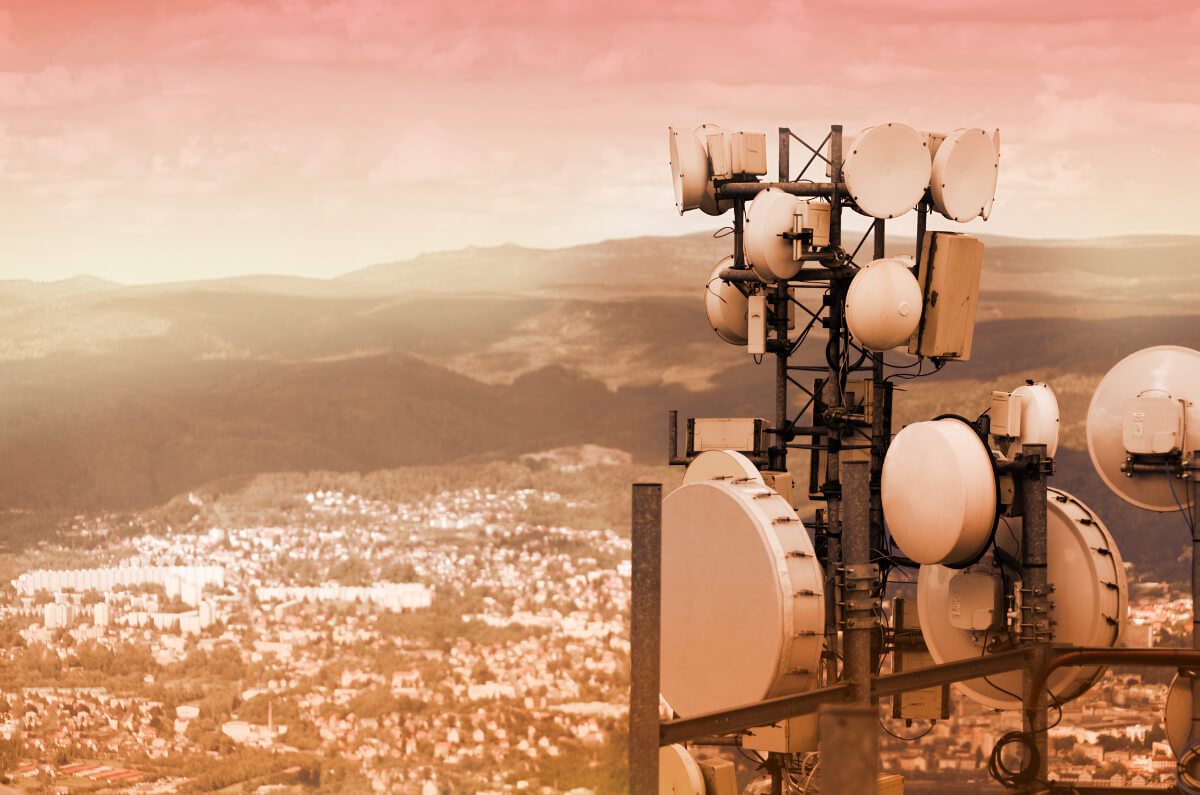Would you like to experience flawless Virtual Reality (VR) and Augmented Reality (AR) on your mobile device? How about commuting to work in your car without having to drive? How about your doctor performing health diagnosis and surgeries from a remote location? This is not at all science fiction. It will happen sooner than you can imagine – 5G is coming soon!
5G promises exponentially faster internet speed, decreased latency, and higher throughput than the existing network. A Qualcomm-led study claims that the next-generation 5G could potentially generate USD3.4 trillion telecom revenues by 2035. The study also claims that this revolutionary network will add 22 million jobs to the telecom industry.
With the rollout of the new mobile technology generation in the market, the time taken by Communications Service Providers (CSPs) to turn new capabilities profitable has shortened. Hence, 5G will be no different. We discuss how the evolution of 5G is driving a flurry of activities across the telecom sector, and what potential the technology holds to transform the consumer scenario and business ecosystem across industries. We explain in detail how 5G would replace 4G cellular technology, which industry players are gearing up to introduce 5G, and where we stand at present.
Is 5G faster than 4G? – Consumer scenario
What happened to previous Gs? To recap, 1G (a fully analog system) was replaced by digital 2G in 1991. Similarly, 3G took over 2G (the first representation of GPRS and EDGE) roughly after 10 years. We are embracing 4G (a LTE network). Historically, as we have witnessed a new generation of networking technology every decade or so, 5G will also offer a similar leap. We describe 5G as an essential element of the upcoming hyper-connected world, which is the first of its kind – versatile, scalable, energy smart.
Why is 5G replacing 4G? The speedier mobile network is poised to transform the overall global scenario. Even though gigabit internet speeds are not new, it is seldom that consumers experience them. However, 5G will have specifications beyond 4G – an ideal scenario of what we can expect. Samsung showcased its 5G Home Routers at Mobile World Congress (MWC). Samsung’s router achieved speeds up to 4 gigabits/second. The speed observed at the MWC could enable users to download a 25GB mobile game in less than one minute. If you are a movie freak, you might download a 100GB 4K movie in a matter of 3-4 minutes.
As per the current development setting, 5G networks are going to be networks of small cells – similar to domestic routers. Compared to traditional huge towers radiating great distances, 5G would be close to the user with an expanded network capacity. 5G, by juggling the size of network routers and advanced antenna technologies, will boost the current network capacity by almost 4 times. Given all the positive expectations around, which industry players are striving to introduce 5G with lower latency and higher capacity?
Industry players introducing 5G
Nokia has recently taken a step closer to 5G networking with the announcement of its premiere 4.5G Pro. The planned 4.5G Pro will deliver ten times the speed of 4G networks. The company is also preparing for the update release of 4.9G, which will push data speeds to gigabits/second.
AT&T and Verizon have started their 5G trialling across a few sites in the US. Both firms have lined up plans to roll out the advanced network over the next decade. The same was planned as part of the Obama administration’s Advanced Wireless Research Initiative, led by the National Science Foundation (NSF).
Ericsson and Orange have more recently announced their upcoming 5G project. Using Ericsson 5G technologies, the collaborative initiative focuses on developing and testing the network on selected use cases on Orange’s network. The partnership might enable concept proofs, pilot network elements, and set up technical blocks across Europe from 2017 onward. The futuristic 5G project will include ultra large mobile coverage solutions. Ericsson is also partnering with NTT DOCOMO and Intel in Tokyo to construct a 5G trial setting. Ericsson plans to conduct 5G trials using 28GHz frequency band. According to a survey by Ericsson, a majority of the CSP industry agree that 5G will support the ongoing influx of connected devices and the IoT.
Business cases
5G will brighten the commercial landscape having the potential to deliver new services. As the digitization of data increases, private sectors are undergoing a tremendous transformation with the rapid development of Internet of Things (IoT). 5G will serve as the bridge to connect 100 billion expected connections by 2025. The early adopter CSPs will be able to decide on how they will deploy 5G and gain a foothold in the rapidly changing markets. CSPs cannot afford to gamble by ignoring the 5G-embedded opportunities. We foresee the following 4 major business cases that will help telco players generate revenue.
Media and entertainment
With the emergence of 5G, the Virtual Reality (VR) and Augmented Reality (AR) experience will have no geographical boundaries. What’s more, the physical gestures in immersive VR/AR environments will become the mainstream of human reaction on social platforms. The high-speed network 5G will revolutionize the (Over the Top) OTT application space. A few OTT/non-OTT applications in the VR/AR space, which will be easily accessible by the users after the launch of the 5G network, would include virtual games, remote presentations, live sports events and intelligent navigation.
Energy
As smart grids involve proper connectivity between sensors and monitoring systems, 5G will revolutionize the way energy is stored, delivered and sold. Being the indispensable component of many national energy strategies, 5G networks will improve overall grid management. This, in turn, will help balance peak load regulation capability and intermittent energy supply. The superfast 5G network will help promptly manage abnormal disturbances in power devices with real-time monitoring – thus, making the smart grid even smarter. 5G would also power robotics in manufacturing by helping control heavy machinery from a distance, thus making hazardous situations safer.
Automotive
Connected cars herald the beginning of the transformation in the automotive industry. Billions of dollars are being invested in the Internet of Vehicles (IoV – the name for IoT in automotive), to realize the real capability of the automotive industry. 5G will drive super fast connectivity, which will enable improved safety and efficiency, thus turning the signal green for connected cars. With a faster and reliable network, it will be easy for autonomous cars to obtain real-time information including quick warnings and panoramic traffic data.
Healthcare
The emergence of 5G will also disrupt the healthcare industry. For instance, wireless telesurgery will see a major transformation in effectiveness with the introduction of 5G. Wireless telesuregery is performed on patients by doctors working remotely, as robotic arms react based on the doctor’s movements. 5G will help counter challenges in delayed and unstable transmission of haptic feedback that might lead to cyber-sickness. Additionally, telehealth services will see a significant improvement with the introduction of the 5G network, including remote diagnosis and efficient video advice applications. Finally, 5G will transform personal health monitoring as implantable medical devices will be able to pull data faster and manage/monitor data for implantable medical devices.
Where do we stand and when is 5G coming?
Network and hardware companies are working to build a true fifth-generation network. Although the future of cellular networks may still be a little hazy, we can be certain about one thing – the future will arrive faster than our expectations. Given all the plans lined up by telco players and the media buzz, the first official 5G may see the light of the day in late 2018. However, the broad deployment will be seen in 2019, which was previously slated to be rolled out in 2020. Carriers and equipment manufacturers like Qualcomm are also making promises to deliver VR-enabled smartphones in 2019. The future sounds very exciting.
Users can’t buy it yet, neither is there any indication of what would be the cost of equipment and routers. Technology and business experts are still not sure if it’s going to be subscription or an all-ownership connection for users. As of now, users can buy Verizon Fios (a 500 MB/s) internet connection. The surprise is the relatively expensive cost of subscription – approximately USD275 per month. Hence, we are optimistic about a cheaper 5G internet connection unfolding in the future. Technocrats hold a strong vision behind the launch of 5G – connecting everything. And who knows, the next time you are close to a retail shop, your device might just pop up some data about the availability of fresh litchis from the content cached nearby in the cloud.









